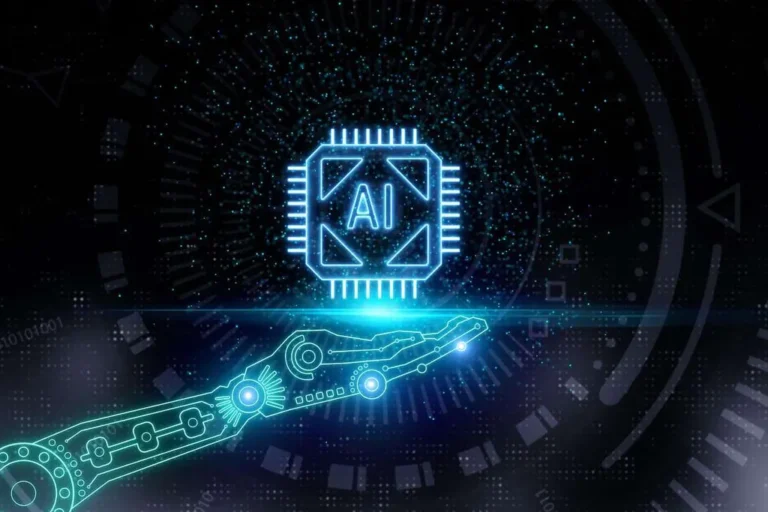That reduces interdependency between applications because the interfaces want little or no data of how the actual service is carried out. If you’re employed in any area of IT or are concerned in decision making about buying IT services, you can be forgiven for typically being confused by the raft of latest terms that have developed in current years. Understanding these execs and cons might help when deciding between SOA and Microservices. It Is all about evaluating your project needs and choosing the architecture suited best to satisfy these needs. Every employee (service) has a particular job (function) they usually communicate with one another to get a task accomplished.
As a outcome, the absence of advanced middleware in microservices structure streamlines the development course of and enhances the overall system’s agility and adaptableness. It’s a design strategy that breaks down complex techniques into impartial providers, every focusing on a particular business operate. What’s excellent about SOA is that these services can work together, even when they’re built with totally different tools or technologies, as a result of they use standard communication protocols.
What’s The Distinction Between Soa And Microservices?

A microservices architecture is a method of creating software program techniques which are cut up into multiple, independent, and small modules. These modules, or ‘services,’ run in their very own course of and talk with one another utilizing lightweight mechanisms, typically HTTP resource APIs. Each service is fully functional and independently deployable, typically owned by a small team. If the data Mobile app development required by a service cannot be derived from another source or calculated using the information supplied by the service client, the service name will fail as a outcome of the service contract isn’t glad.
Communication
In this case the original contract (version 1.0) can remain backward compatible by making the brand new delivery-instructions field optional. This impartial scaling capability makes microservices ideal for cloud environments, where sources could be dynamically adjusted to match fluctuating hundreds. Supplies excessive efficiency, but scalability may be constrained by complicated enterprise logic and data volume. Microservices are fine-grained, each performing a single particular task, making them extra modular and easier to handle. Understanding these rules and components permits builders and designers to harness the benefits of service-oriented structure and build robust, scalable systems. Shops metadata about companies, such as their descriptions, contracts, schemas, and insurance policies.

Each architectures have their strengths and will continue to play a big position in software program growth. As know-how evolves and demands for system flexibility and scalability increase, we are able to combine elements from both architectures for optimal outcomes. This signifies that we can use the same service across different functions and contexts without modification. For occasion, an authentication service may be utilized by both an online utility and a cellular utility, offering a unified solution for access administration. Larger, extra numerous software environments have a tendency to benefit from SOA as a outcome of it allows strong integration by way of the ESB.
The obvious start line when looking to examine SOA and microservices is to completely perceive what every time period means; constructing a strong foundation from which you can make your determination. That may be especially true if you’re taking a glance at modernizing monolithic applications and legacy systems that you wish to function efficiently in a modern digital environment. When diving into the world of software architectures, a number of questions would possibly arise. Let’s answer a few of the most frequently asked questions related to SOA and Microservices.
This issue created a significant shift in how we take into consideration services and how to shield them from shoppers who shouldn’t have access to them. Although the top result of these error circumstances is similar (the service request can’t be processed), they’re dealt with in different ways. Since service availability is said to service connectivity, there’s not much a service shopper can do besides to retry the connection for a set number of occasions or queue the request for later processing if possible.
You determine that it’s too coarse-grained, and also you need to cut up the service into two smaller fine-grained services to extend scalability and ease deployment. With Out an API layer abstracting the actual https://www.globalcloudteam.com/ service endpoints, every service consumer using the service must be modified to name two providers rather than just one. If you utilize an API layer, the service customers don’t know (or care) that the single request is now going to 2 separate companies. One solution to the problem of service choreography amongst useful services within a microservices architecture is to mix fine-grained providers right into a more coarse-grained service. Thanks to the small service size and minimal coordination needed with other teams, providers may be quickly developed, examined, and deployed by way of an efficient deployment pipeline. This translates to faster time to market, decrease growth and maintenance prices, and more-robust purposes.
Making Use Of these rules enables the creation of reliable and productive systems soa vs microservices able to rapidly adapting to changing requirements. This permits for updating and scaling each microservice without shutting down the whole system. Updating a fee processing microservice does not require stopping the user management microservice, minimizing downtime, and reducing risks. Each service is an autonomous useful unit that gives particular capabilities or knowledge. Companies could be of various varieties, together with enterprise and infrastructure providers and composite companies that mix several other companies to carry out extra advanced duties. SOA emphasizes sharing parts and sources throughout the group, with the aim of maximizing reusability and lowering duplication.
Particularly, I concentrate on the differences between the 2 patterns with respect to the level of service-component sharing, the extent of service-component communication, and how remote service elements are typically accessed. I additionally dive into the variations between the messaging middleware discovered within the SOA architecture pattern and the elective API layer discovered within the microservices architecture pattern. This difference in granularity naturally relates to variations in service part scope and performance. With microservices, the service component performance (what the service truly does) tends to be very small, generally applied by way of just one or two modules.
With SOA, companies tend to embody much more enterprise performance, generally implemented as full subsystems (e.g., claims-processing engines or warehousing systems). However, extra usually SOA depends on a number of companies to finish a single enterprise request, whereas microservices structure typically doesn’t. I focus on this matter in additional detail within the “Service Orchestration” section of the subsequent chapter. Service-oriented structure (SOA) is a method of software program growth that uses software program components referred to as companies to create business purposes. Builders use SOA to reuse companies in different techniques or combine a number of impartial companies to carry out advanced duties. Whereas every SOA service is a full business capability, each microservice is a much smaller software program element that specializes in a single task solely.
- A microservices architecture is a technique of creating software techniques which are cut up into a number of, impartial, and small modules.
- In addition, SOA’s standards-based communication protocols help in facilitating smoother and safer interactions between disparate methods.
- Business services are usually owned by business users, whereas enterprise companies are usually owned by shared providers teams or architects.
- The service composition precept allows combining of multiple providers to create more complicated business processes and applications.
If you’re employed in IT or the cloud computing field, you’re most likely conscious of the service-oriented structure (SOA) versus microservices debate. After all, everyone appears to be talking about microservices and agile purposes today. SOA services use frequent user interface templates, so it’s simpler to incorporate them into any new apps.
DevOps can be utilized to help a company transition from SOA structure to microservices to deal with particular needs. If a problem does come up with one service, then solely that microservice can be affected, and the others would function as anticipated. There is also the problem of value for cash, and tons of businesses search to reduce back reliance on Tibco ESB. If you select microservices to modernize your legacy methods, then it’s simpler to undertake new tech and processes when updating your tech stack. This means you presumably can expand the apps that you supply with little to no difficulty.
Reusability and component sharing in an SOA structure will increase scalability and efficiency. Healthcare service supplier Independence Blue Cross needed a system that would allow different groups (such as customer support agents or physician’s offices) to access a “single supply of truth” in relation to patient information. OpenLegacy supplied a microservices integration resolution that was integrated quicker and cheaper than other options. With SOA, it can be easy to maintain, replace, or modify one service with out affecting the performance of other providers. This all makes it simpler for your IT staff to work on SOA techniques because of its modularity. Because each SOA service contains all of the code and knowledge to complete individual features, service interfaces provide free coupling (also known as decoupling).

